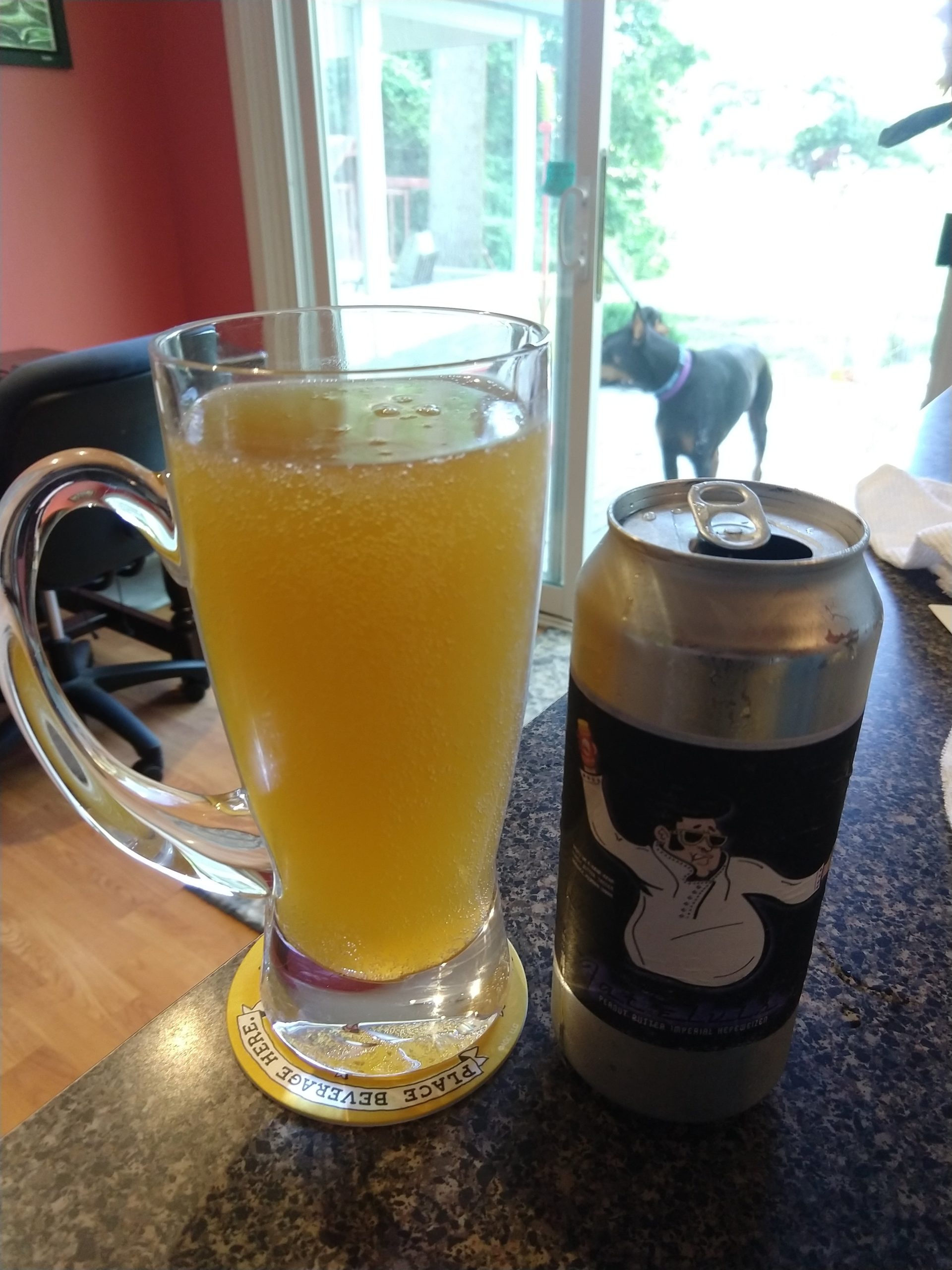
Super sweet aroma of malt and bananas. Initial taste of peanut butter, followed by yeast sweetness, and fades to leave banana flavors lingering. Sweet, but odd, and slightly alcohol-ly.
3.5 out of 5 stars.

Super sweet aroma of malt and bananas. Initial taste of peanut butter, followed by yeast sweetness, and fades to leave banana flavors lingering. Sweet, but odd, and slightly alcohol-ly.
3.5 out of 5 stars.
This was my first attempt at a high gravity IPA, and I was trying to create a recipe that would use a healthy dose of my bulk grains and hops that I may have overbought… It was planned to be a 10% ABV, and hence the clever name based on CDC guidance that to kill the COVID virus you needed a disinfectant with at least 70% alcohol.
Anyway, gravity turned out lower than planned, and a last minute yeast issue had me using different yeast than originally planned. So I ended up splitting the batch in two, and using two different yeasts.
Both versions have the common thread of a big punch of hop bitterness, a mild malt presence, and notable alcohol bite/aroma. The batch fermented with East Coast Ale yeast has sweeter, fuller taste, and the batch fermented with the Vermont IPA yeast is a bit smoother.
Brewed: 5/25/2020. Distributed: 6/19/2020.
ABV: 7.9% (Vermont IPA), 8.9% (East Coast Ale) IBU: 154
Malts: Maris Otter, Viking Xtra Pale, Flaked Wheat, White Wheat, Red X
Hops: Magnum, Citra, Columbus, Falconer’s Flight, Amarillo, Cascade
Yeast: Gigayeast GY054 Vermont IPA, White Labs WLP008 East Coast Ale
Overall very mild. Very little malt flavor, slight hop bite with mild hop aroma.
Brewed: 5/22/2020. Distributed: 6/19/2020.
ABV: 5%, IBU: 28
Malts: Viking Xtra Pale
Hops: Magnum, Chinook
Yeast: Wyeast 1056 American Ale
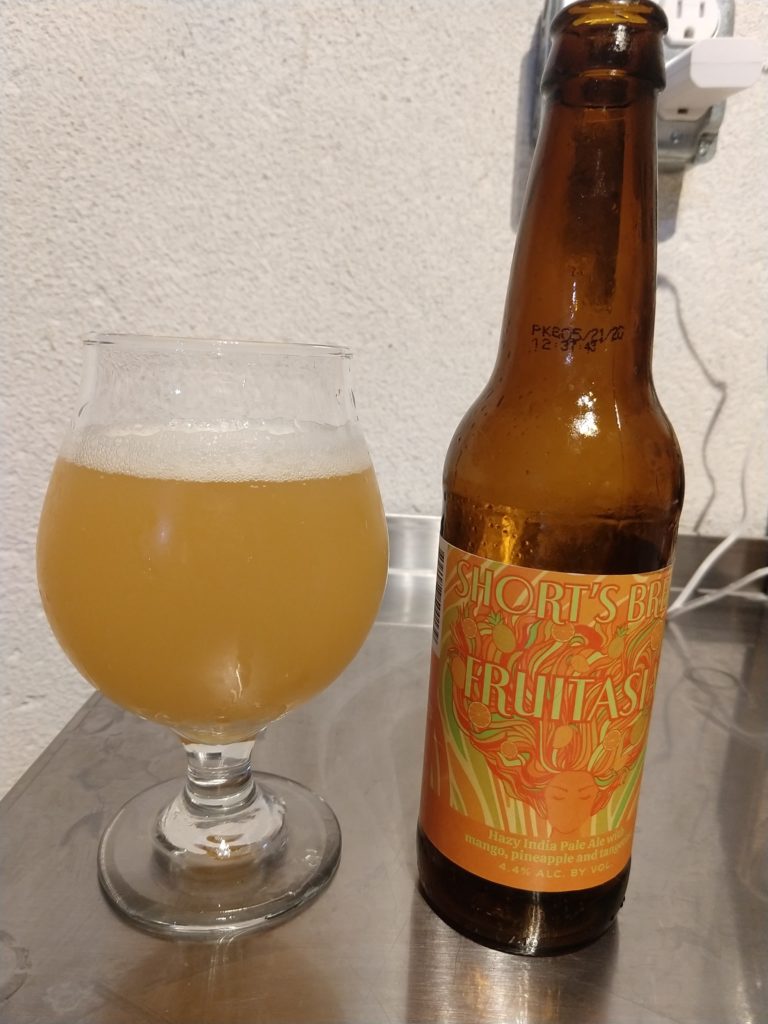
Super fruity aroma, strong juice and hops smell. Slightly puckering sweetness like grapefruit juice, with orange-y flavors on back end. No malt presence, very little carbonation. Smooth, yet puckering, combined with during fruit flavors.
3.5 out of 5 stars.
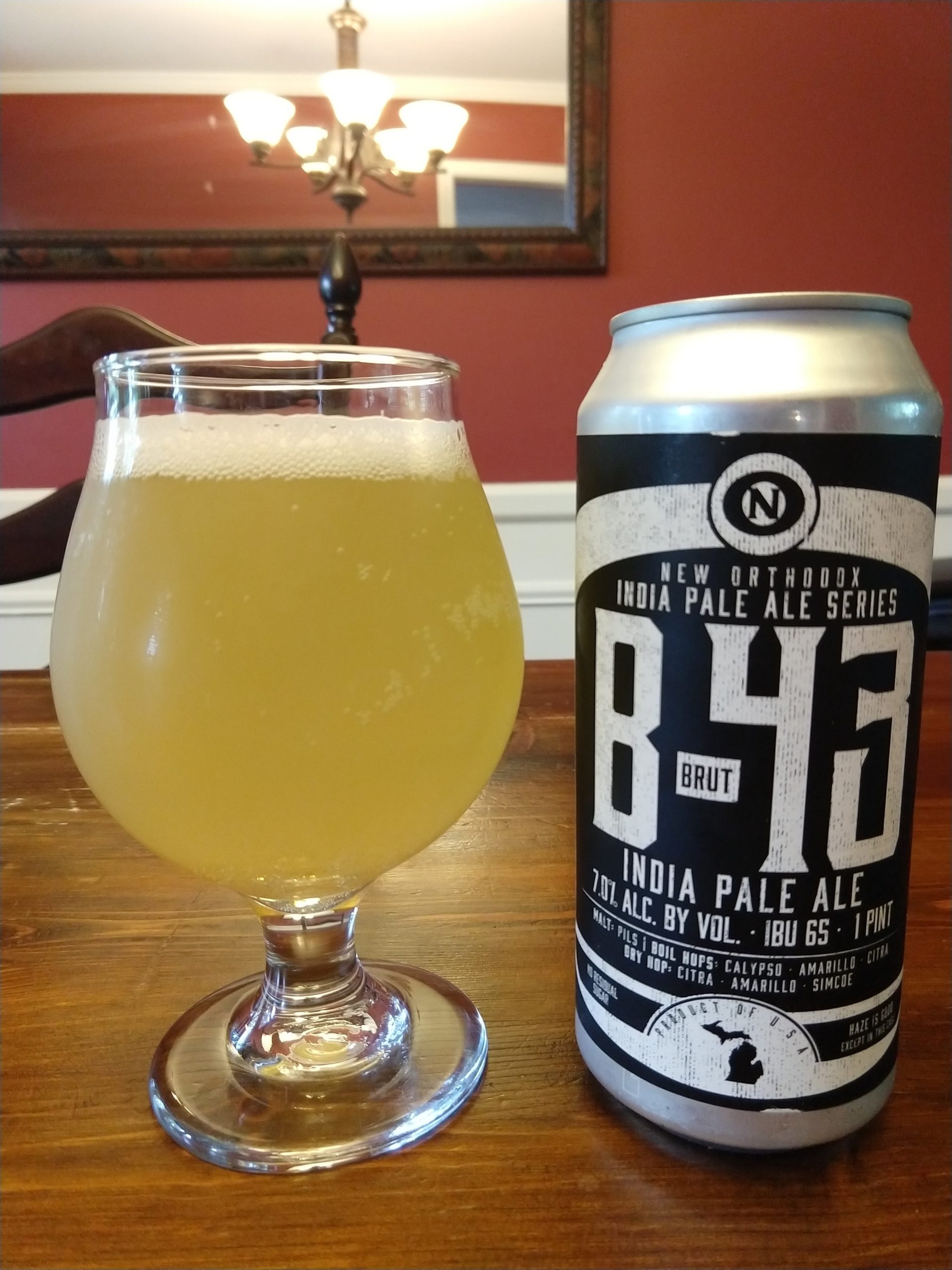
Sweet aroma of hops, with a tropical twist. Smooth taste that quickly spreads across the palate. Slight hop bitterness that smooths out quickly and leaves you with a yeast taste. Further drinks seem to crispen the taste and leave the taste buds puckered.
After a few drinks, leaves a very distinct, salty aftertaste. Not a fan of that…
3 out of 5 stars.
The America Homebrewer’s Association (AHA) promotes a “Big Brew Day” in the spring. The idea being people around the world are brewing on the same day in a big event. They put out one or two recipes for people to brew if you want to join in and be brewing the same thing as others. This year’s big brew event I usually go to was cancelled (COVID), but I brewed from home on that day, and this is one of their recipes.
The taste is very hop forward with a hop bite, and a hint of yeast. Finishes very cleanly, with lingering hop flavors. Crisp and hoppy.
Brewed: 5/2/2020. Distributed: 6/5/2020.
ABV: 6.6%, IBU: 74
Malts: Brewer’s 2-row malt, Munich, Caramel 40L, Caramel 20L.
Hops: Columbus, Centennial, Cascade
Yeast: Wyeast 1056 American Ale
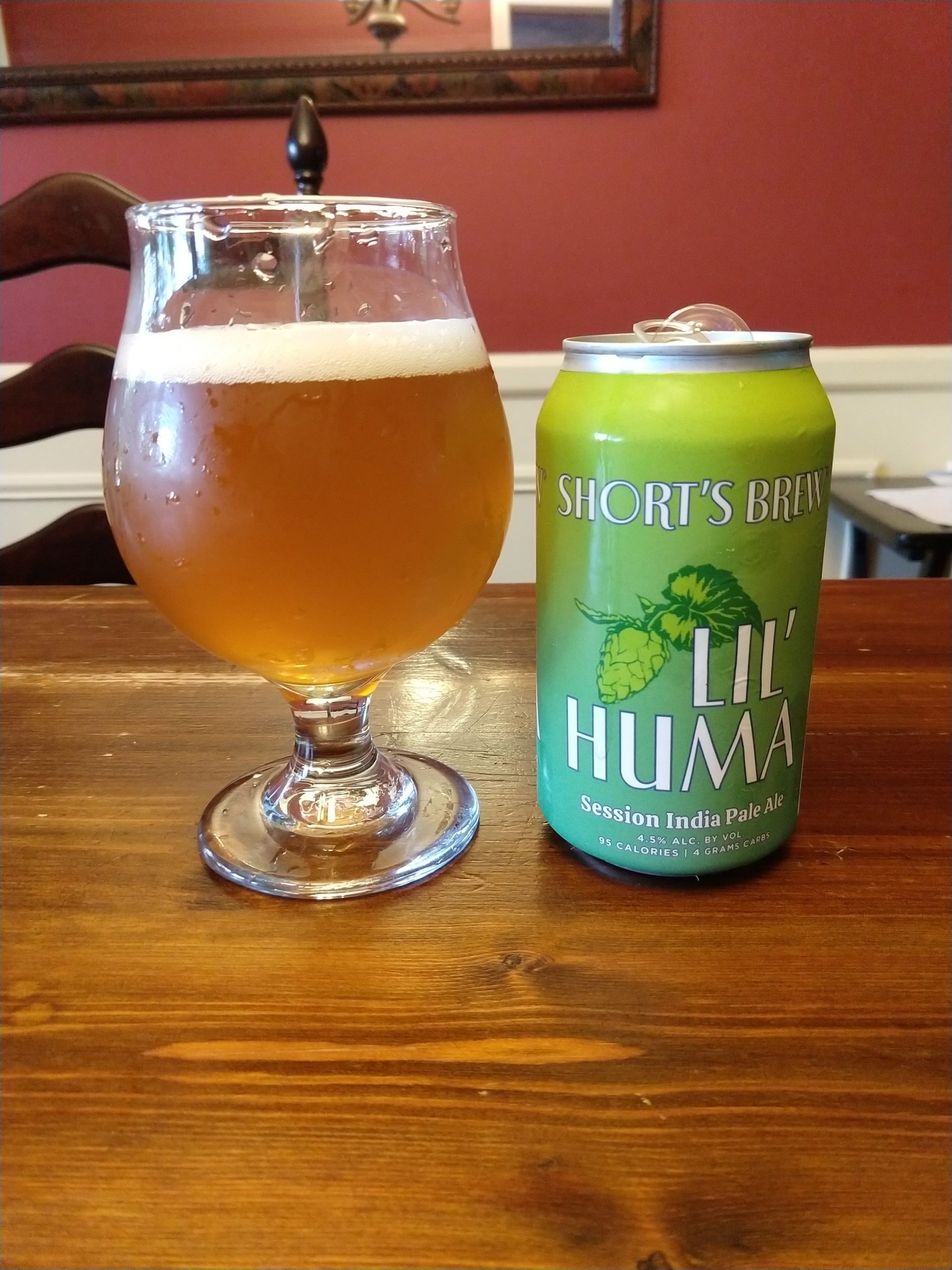
Light sweetness of hop aroma and some yeast. Flavor is smooth and slides in with hop flavor, but no real bite. Aftertaste has a slight hop edge that lingers, as well as a faint hint of caramel malt sweetness. Refreshing.
4.5 out of 5 stars.
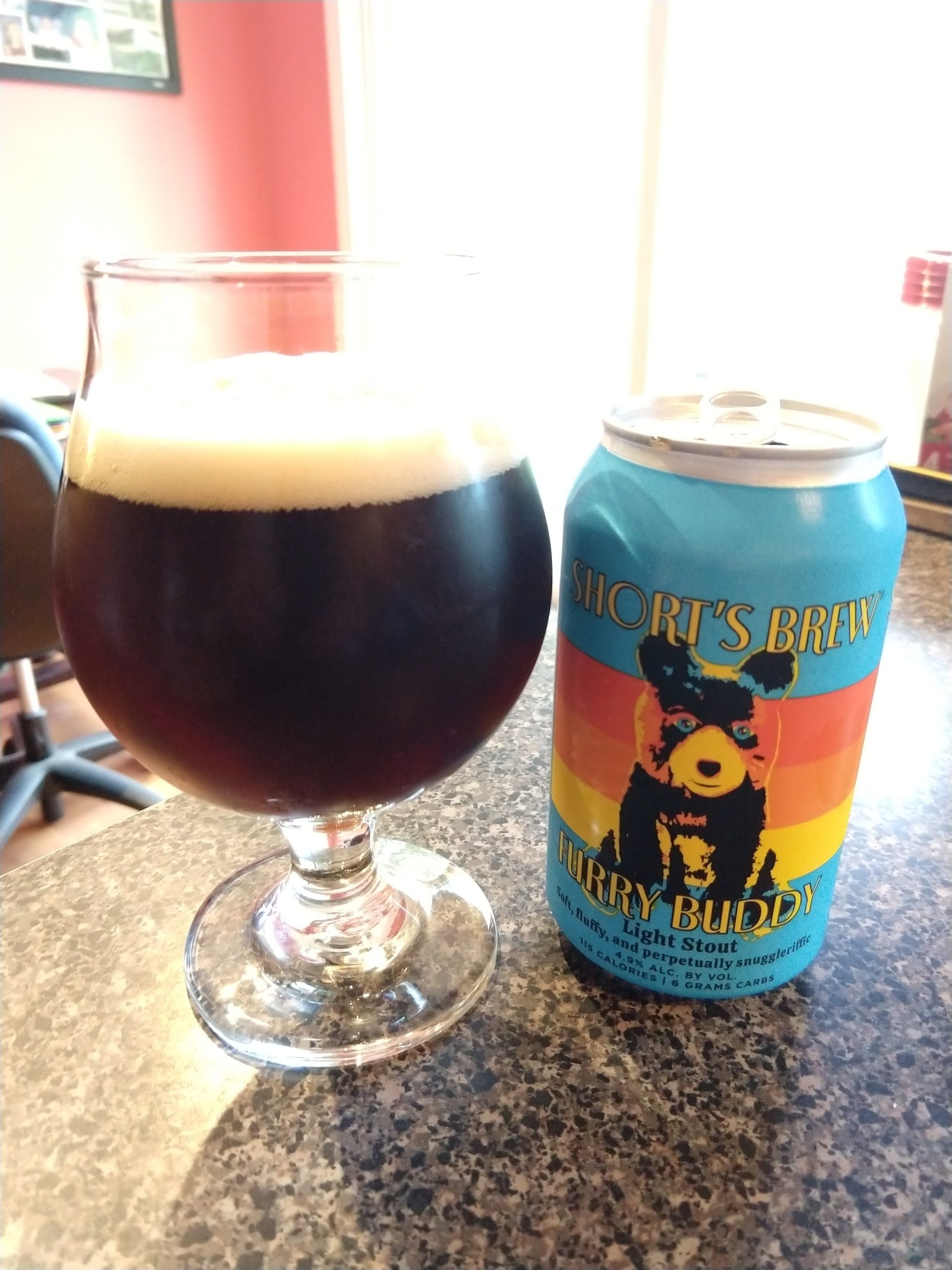
Light sweet aroma of dark malt. Taste is crisp and clean, with a very light dark malt aftertaste. Refreshing and crisp. Flavorful, yet light.
4.5 out of 5 stars.
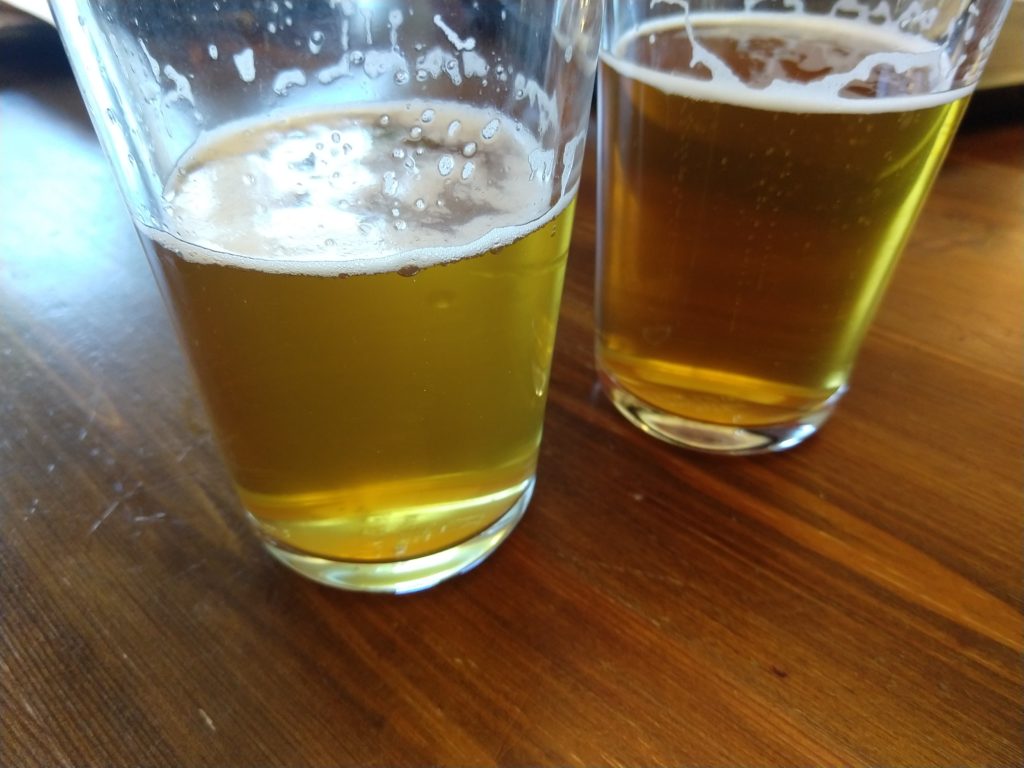
I was doing an evaluation on a homebrew canning machine a couple months ago. As part of that review, I was trying to assess how the carbonation of the beer held up for the beer that was canned, as compared to beer coming straight from the tap. I poured the golden beers and when lining them up for the side-by-side shot, in horror, I noticed the telltale unhealthy haze in my draft beer. The beer from my tap went through my beer lines of the keezer, whereas the canned beer was filled via a separate liquid line attached directly to the keg.
There’s a glowing haze of an unfiltered homebrew that looks magical, and almost looks like the beer is glowing. Haze from dirty beer lines has a slightly white/gray appearance, almost like it’s been mixed with dose of soapy water.
I’d encounter this in some restaurants and bars, and could identify it instantly by its distinct look. It would have a distinct sour tinge to it, and whatever the beer was, it made it tasted a bit gross. I used to shake my head in a “for shame” sort of way, as I explained to my table mates that this place obviously didn’t take care of their beer lines properly and were serving beers through dirty lines.
The Brewers Association has a Draught Quality Manual they make available for free. They spell out a cleaning regimen of every 2 weeks to flush the lines with a caustic cleaner and remove the faucets to clean them. I thought that sounded like too much work, so I opted for about once a month. That slid into about every 2 months, and then became ever less frequently due to sheer laziness. I told myself that with beer continually flowing through the lines, nothing had a chance to go stagnant and contaminate them. I was wrong.
I have yet to establish a set cleaning interval with proper rigor, but I do now know my homebrew draft lines are not immune to the telltale disaster of dirty beer lines I’d scoff at in bars & restaurants. Clean your lines!
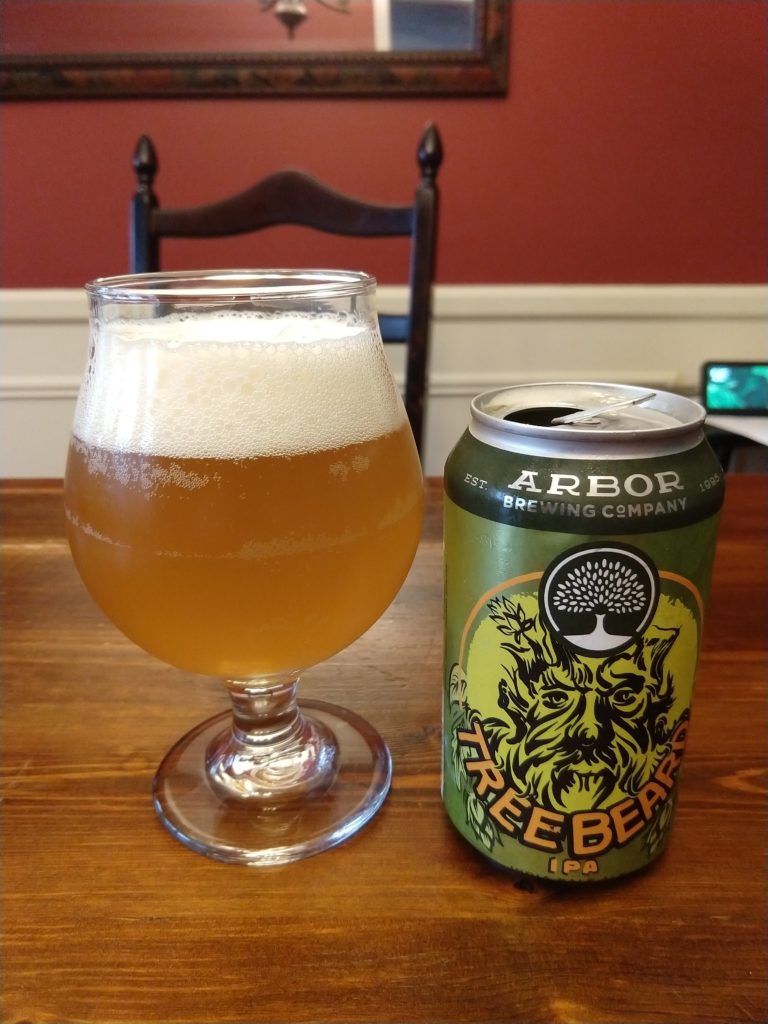
Bright fruity hop aroma. First taste is slightly puckering like lime, but smooths quite quickly. Bright and flavorful burst in the mouth, then mellows and leaves with a slightly taste aftertaste.
4 out of 5 stars.